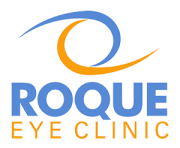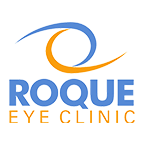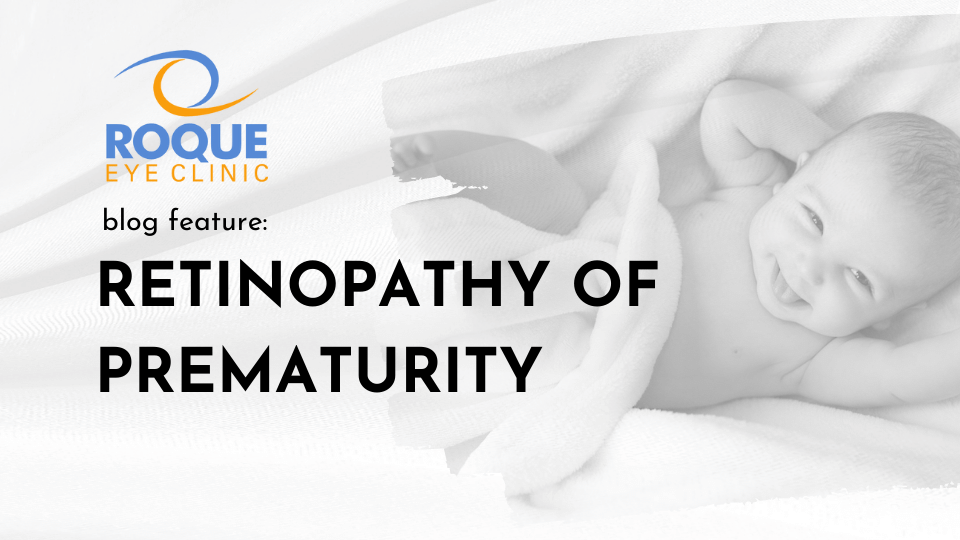Retinopathy of Prematurity
ROP is an abnormal proliferation of retinal blood vessels in premature infants who are born before the retinal vessels complete their normal growth. It is theorized that localized retinal ischemia causes the abnormal proliferation to happen. Preterms are at risk to develop ROP if they have low birthweight, low gestational age, and if they were on supplemental oxygen for a long time.
A fetus does not need a lot of oxygen inside the womb. When infants are born prematurely, and exposed to hyperoxic state, their retina stops growing. Over time, the lack of blood supply in the retina stimulates VEGF (vascular endothelial growth factors), leading to abnormal vessel proliferation (neovascularization).
The visually devastating complications of ROP can be prevented by screening infants at risk of developing it.
The following preterms should be screened: low birthweight (1500 grams or less), low gestational age (30 weeks or less), heavier or older infants who are believed by their pediatrician to be at risk for ROP.
Infants at risk should be examined by an ophthalmologist who is experienced in the examination of preterm infants using a binocular indirect ophthalmoscope.
Following pupillary dilation using eye drops, the peripheral portions of the retina of the infant are pushed into view of the indirect ophthalmoscope using scleral depression. It is important to bear in mind that the use of dilation drops have possible side effects to the cardiorespiratory and gastrointestinal system of the infant.
Diagnosis is based on the severity (stage 1-5), extent (zone 1-3), and vascular characteristics of the blood vessels in the posterior retina.
Stage I — Mildly abnormal blood vessel growth.
Stage II — Moderately abnormal blood vessel growth.
Stage III — Severely abnormal blood vessel growth. The abnormal blood vessels grow toward the center of the eye instead of following their normal growth pattern along the surface of the retina.
Stage IV — Partially detached retina. Traction from the scar produced by bleeding, abnormal vessels pulls the retina away from the wall of the eye.
Stage V — Completely detached retina and the end stage of the disease.
Plus Disease is the severe form of vascular dilation and tortuosity. Aggressive Posterior ROP (AP-ROP), also called “type II ROP” or “Rush Disease”, is the rapidly progressing severe form of ROP, and usually progresses to stage 5 if left untreated.
A repeat dilated eye examination is done 1-2 weeks after, depending on the initial findings. Dilated eye examinations can be stopped once the retina is fully vascularized or has fully regressed.
Preterms should be seen by a pediatric ophthalmologist within 4-6 months after discharge from the NICU because they are at increased risk for developing strabismus, amblyopia, high refractive error, cataract, and glaucoma.
Laser photocoagulation treatment (within 72 hours) is currently recommended for “type 1 ROP”, which may be any of the following: any stage ROP with plus disease in Zone 1, stage 3 ROP without plus disease in Zone 1, stage 2 or 3 ROP with plus disease.
Pharmacologic anti-VEGF intravitreal injection has shown promise (compared to conventional laser surgery) for treatment of stage 3 ROP with plus disease in Zone I (not Zone II). However, anti-VEGF treatments are not yet approved by the US FDA for the treatment of ROP and the optimal dose , safety profile, and follow up schedule following treatment are still under investigation.
- Al-Taie, R., Simkin, S., Doucet, E., and Dai, S. (2019). Persistent avascular retina in infants with a history fo type 2 retinopathy of prematurity: to treat or not to treat? J Pediatr Ophthalmol Strabismus, 56(4): 222-228.
- Chen, Y., Liu, L., Lai, C., Chen, K., Hwang, Y., Wu, W. (2020). Anatomical and functional results of intravitreal Aflibercept monotherapy for type 1 retinopathy of prematurity: one-year outcomes. Retina,
- Hansen, E., and Hartnett, M. (2019). A review of treatment for retinopathy of prematurity. Expert Rev Ophthalmol, 14(2): 73-87.
- Quinn, G., Ying, G., Bell, E., Donohue, P., Morrison, D., Tomlinson, L., Binenbaum, G., G-ROP Study Group. (2018). Incidence and early course of retinopathy of prematurity: secondary analysis of the post-natal growth and retinoptahy of prematurity (G-ROP) study, JAMA Ophthalmol, 136(12): 1383-1389.
- Sankar, M., Sankar J., and Chandra, P. (2018). Anti-vascular endothelial growth factor (VEGF) drugs for treatment of retinopathy of prematurity. Cochrane Database Syst Rev, 1(1): CD009734.
- Sternberg, P. Jr., and Durrani, A. (2018). Evolving concepts in the management of retinopathy of prematurity. Am J Ophthalmol, 186: 23-32.
- https://www.nei.nih.gov/learn-about-eye-health/eye-conditions-and-diseases/retinopathy-prematurity
BOOK AN APPOINTMENT
It takes less than 5 minutes to complete your online booking. Alternatively, you may call our BGC Clinic, or our Alabang Clinic for assistance.






